Advertisement
CLIMATE CHANGE IN MASS.
Bacteria That Thrive In Warmer Waters Keep Mass. Oyster Fisheries On High Alert
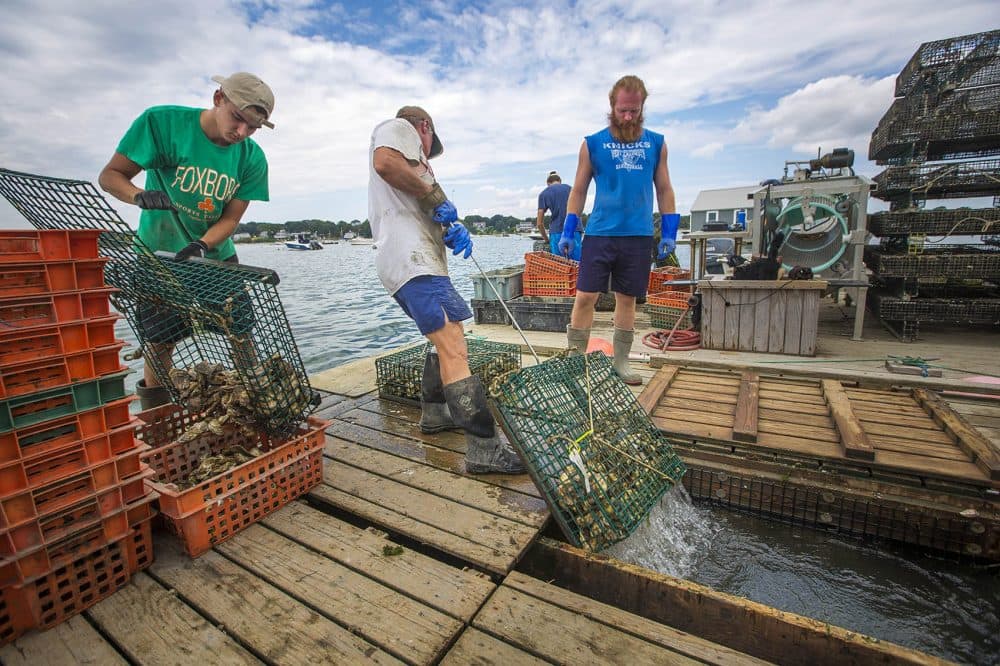
Massachusetts loves its local oysters from places like Wellfleet and Duxbury. The state’s bivalve business is booming along with increased consumer demand. These days there’s no shortage of $1 oyster specials and oyster-centric restaurants around here.
But the ways oysters are harvested and handled have become more involved and challenging since 2013. That's when bacteria linked to warming waters appeared in our marshes for the first time.
The result was an outbreak of gastrointestinal illness caused by Vibrio Parahaemolyticus -- Vp or Vibrio for short. (To be clear, this is different from norovirus, which led to a closure of shellfish beds in Wellfleet last year.)
In response to the Vp bacteria’s emergence in New England, the state implemented a Vibrio Control Plan. Here's how those state efforts to control bacterial infection have been affecting people in the oyster industry.
'The Waters Are Warmer Than They Used To Be'
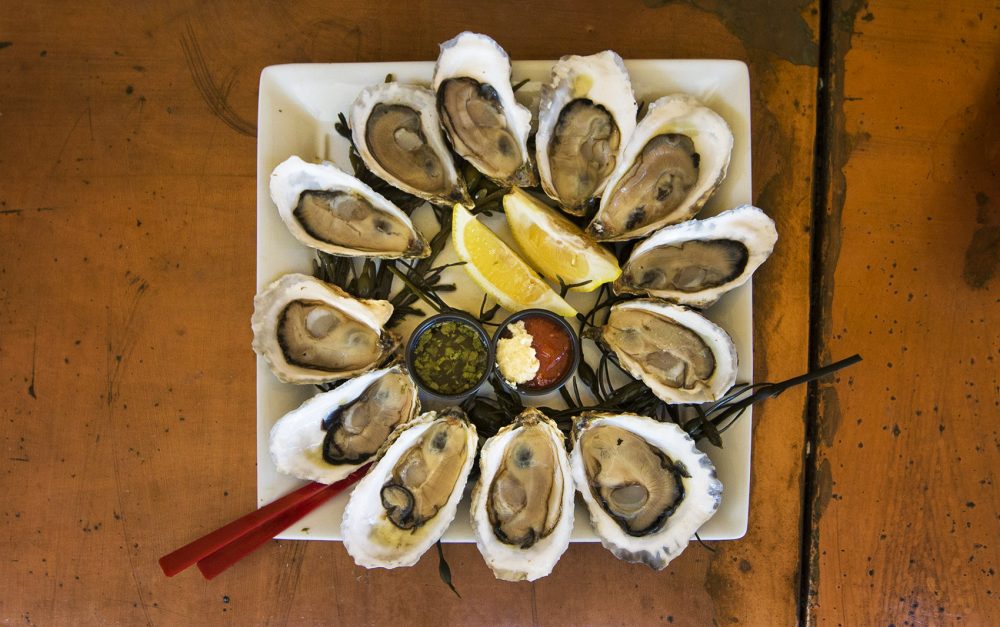
At Select Oyster Bar in Boston, you can find a rotating selection of Massachusetts oysters on-the-half-shell -- Moon Shoal petites from Kingston, Ichabods from Plymouth and Wellfleet Puffers.
For about a dozen years Select’s chef-owner Michael Serpa has been serving mollusks in Boston establishments, including the cult-favorite Neptune Oysters in the North End. “I've seen a lot of oysters," he told me, smiling.
Serpa remembers the Vibrio outbreak of 2013. More than 60 reported cases of food-borne gastrointestinal illness led to shellfishery shutdowns on the South Shore and Martha's Vineyard.
The chef said the outbreak was scary because it marked the first time Vibrio was found in Massachusetts oysters. It sounded an alarm and caused Serpa to ask a slew of questions.
“What if that continues more? What if now there are no Island Creeks? What if there are no Cape oysters? What if that continues?” he recalled. “And the reason for that is obviously the waters are warmer than they used to be.”
Advertisement
A Spike In Cases In 2013
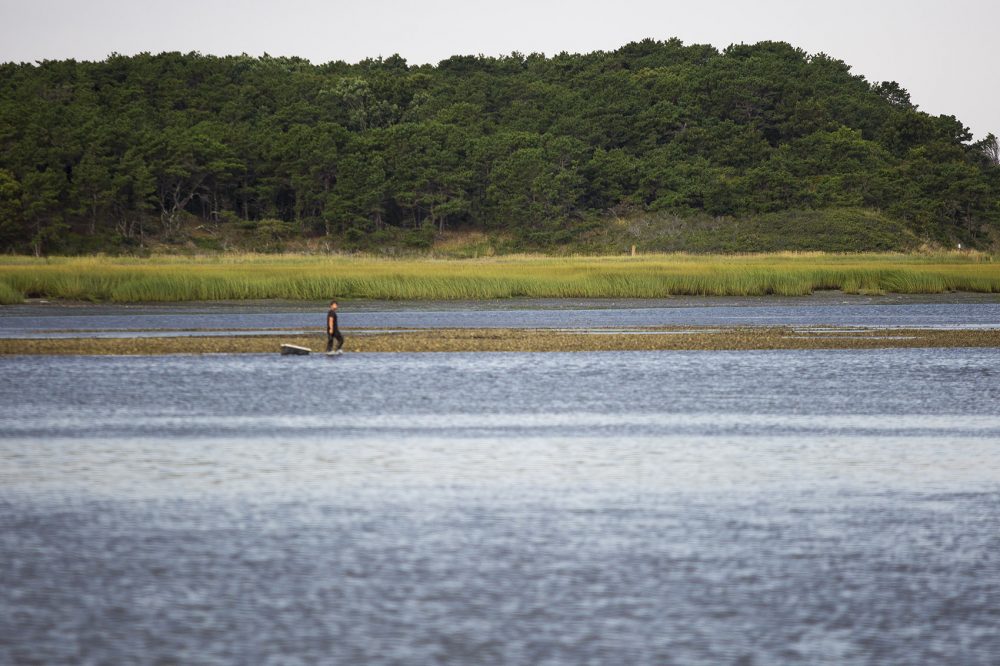
A lot of people connect higher ocean temperatures to Vibrio outbreaks in New York, Connecticut and Massachusetts. Surveillance measures for the bacteria strain have long been practiced in southern states like Alabama, Florida, Louisiana and Texas.
“It’s bacteria that naturally inhabits coastal waters,” said epidemiologist Johanna Vostok, who works for the state Department of Public Health’s Bureau of Infectious Diseases and has been tracking a rise in confirmed Vp cases. “It isn't an indication of pollution, but when you have warmer temperatures, there's more bacteria.”
Thirteen states saw a spike in reported Vibrio illnesses in 2013. It was a wake-up call for the oyster industry in Northeast areas like Wellfleet, where a working group was forming a climate change document for the town's future.
Barbara Brennessel, a Wheaton College emerita ecologist, writer and recreational oyster harvester, was on Wellfleet's Shellfish Advisory Board. She said as Vibrio reared its ugly head, the bacteria became an urgent topic of town conversation.
“Wellfleet's had a very long shellfishing history dating back from the 1600s when Samuel de Champlain sailed into Wellfleet and couldn’t navigate because of the massive reefs that were here,” she said. “So everybody's concerned about Vibrio — not just the growers — but it's part of the identity of the town to have this shellfishing industry.”
Seafood landings bring about $6 million to Wellfleet, most of it shellfish.
Brennessel added: “People appreciate oysters here, not just [for] their economic value, but also for what they contribute to the environment. They filter water and they create habitat.”
To keep the industry going, hundreds of fishermen, growers and wholesalers have been complying with the additional state regulations created to protect consumers by keeping harvested oysters destined for the marketplace cold, and ultimately safe.
'Vibrio Patrol'
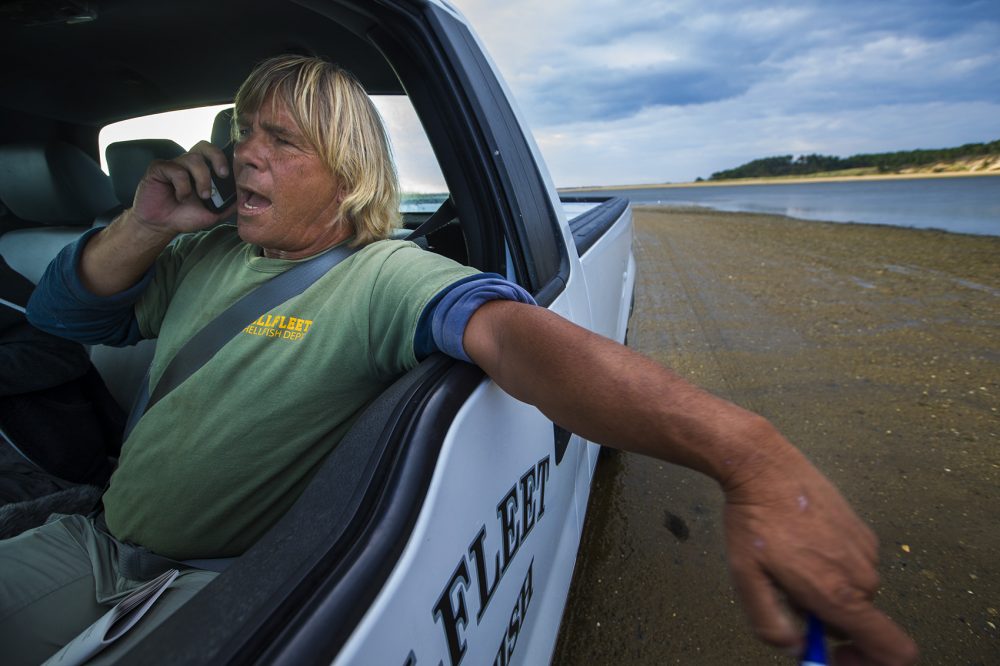
It’s 7 a.m. — just before low tide — and Wellfleet's assistant shellfish constable, John Mankevetch, is on “Vibrio Patrol.”
A big part of his job is monitoring compliance among wild and aquaculture fishermen during “Vibrio season,” which runs from May 21 through Oct. 16.
As the tide readies to recede, he and Shellfish Constable Nancy Civetta divide up Wellfleet’s various designated commercial areas before setting out to make sure the fishing community is abiding by regulations.
It all begins when an oyster is plucked from its watery home.
“Once that oyster becomes exposed, we sort of assume that there's bacteria in the oyster,” Mankevetch explains. “Through icing and managing exposure time, we arrest the growth of the bacteria.”
A former wild oyster hunter himself, the 50-year-old maneuvers a town truck along the oyster shell-covered shoreline in the Herring River commercial shellfish area.
He pauses as he peers across the shallow channel. He points to a lone harvester filling a covered, floating oyster tote.
“And we have one of our wild fishermen going out there,” Mankevetch says, “and he's doing exactly what he's supposed to do.”
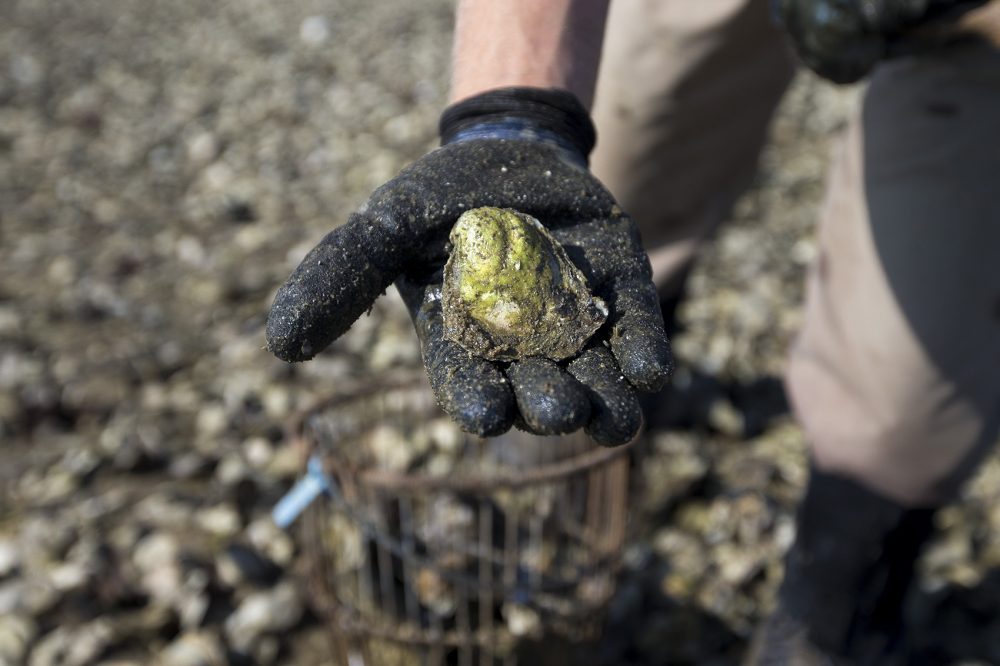
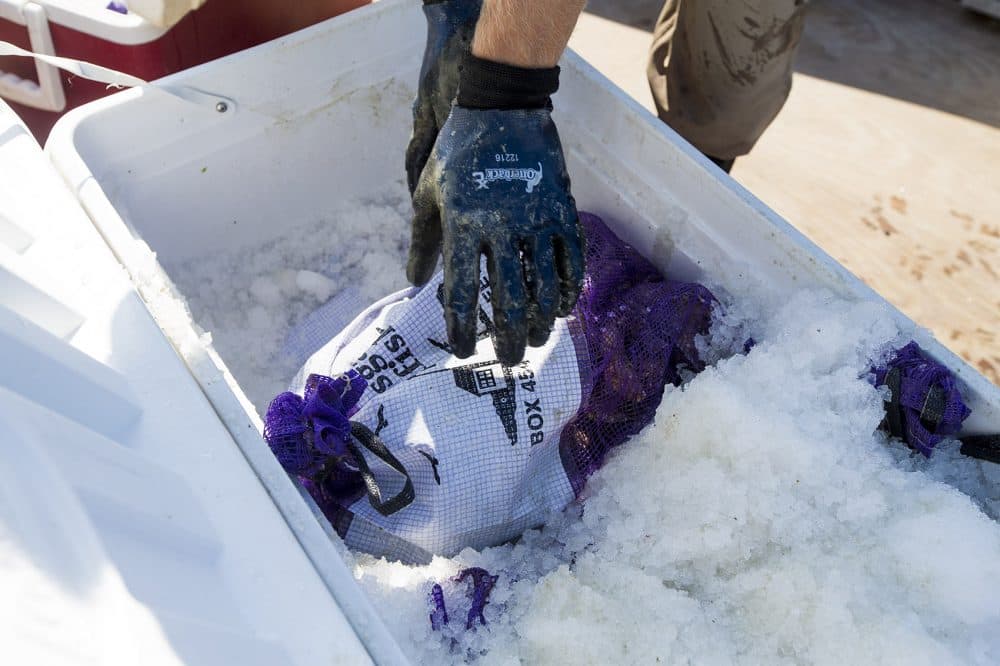
Licensed fishermen are supposed to begin a countdown at that moment of first exposure. Then they’ll need to get their freshly picked bounty into an ice- or ice-slurry-filled cooler within two hours.
They’re also required to take detailed notes, filling in a state-issued “Oyster Harvester Logbook” to document their locations, exposure times, icing times and — in the end — where they sold their oysters. The book is submitted to regulators.
Oyster bags get tagged, too, which helps make them traceable through the supply chain.
Mankevetch says if there's more than one Vibrio illness, the state could shut Wellfleet’s fisheries down.
“Within our little shellfish culture here, nobody wants to be ‘the one,’ " he says. “Because there's no hiding. We're not a very big town — we all go to the same beaches, we all go to the same stores — so that is an aid in our patrol as well.”
Mankevetch thinks the Vibrio Control Plan is working well. He adds that he thinks officials have done a good job trying to mitigate the impact on the shellfish community. And protocols have been tweaked over the years.
Even so, the constable does recall some pushback when the new regulations came to a town populated by independent fishermen.
“Some people just weren't going to do it. Some people just weren't going to fish,” Mankevetch recalls. “But we’ve all just adjusted to it.”
'One Bad Vibrio Thing Can Spoil The Whole Thing'
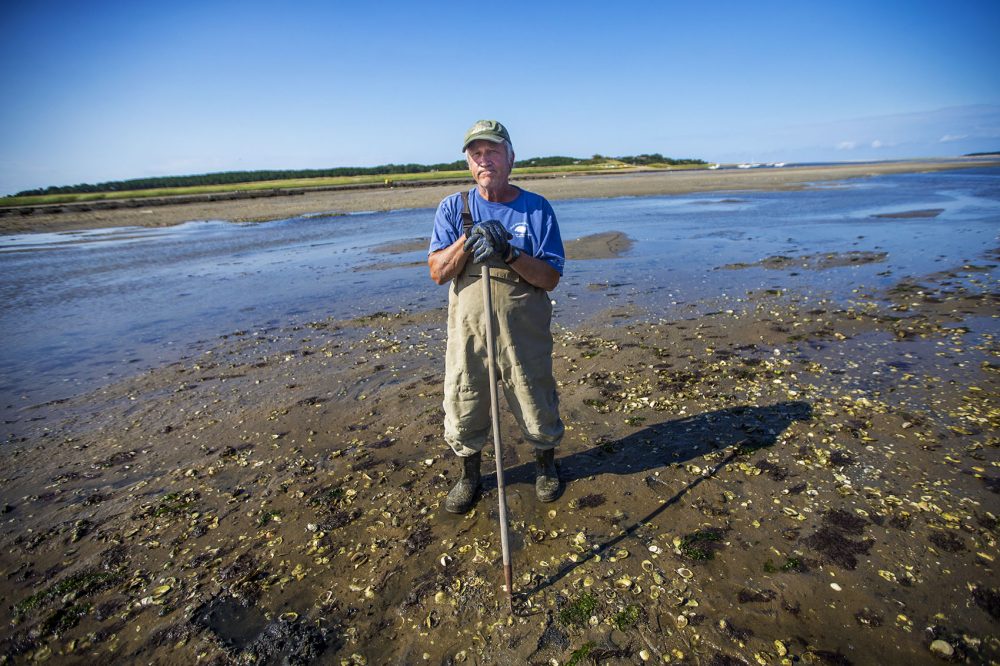
At Pounded Point in South Wellfleet, you’ll find both wild oystering and about 40 aquaculture grants, which are state-designated shellfish farming areas.
Shellfish Constable Civetta leads me through the exposed muck, our rubber boots sloshing through the dregs of tide. Turn around and you see teams of people in boots and waders, working between rows of rectangular wire enclosures. Some have bags of oysters.
A young fisherman sorts through the morning’s take in a wooden processing structure owned by Bob Wallace, a longtime grower and founder of Billingsgate Shellfish.
“We used to be able to throw these back in the back of the truck and let them sit all day before we went down the road to sell them,” he recalls.
And now? “It's managing around what you have to do,” Wallace says, including requirements to re-submerge exposed oysters and, of course, the need for icing. “But you know, anything to ensure the public's health, I'm all for it. It's one bad Vibrio thing can spoil the whole thing.”
Wallace shows me his tagged bags with 600 oysters per unit. They were exposed to air at 7 a.m. and were covered in ice by 8.
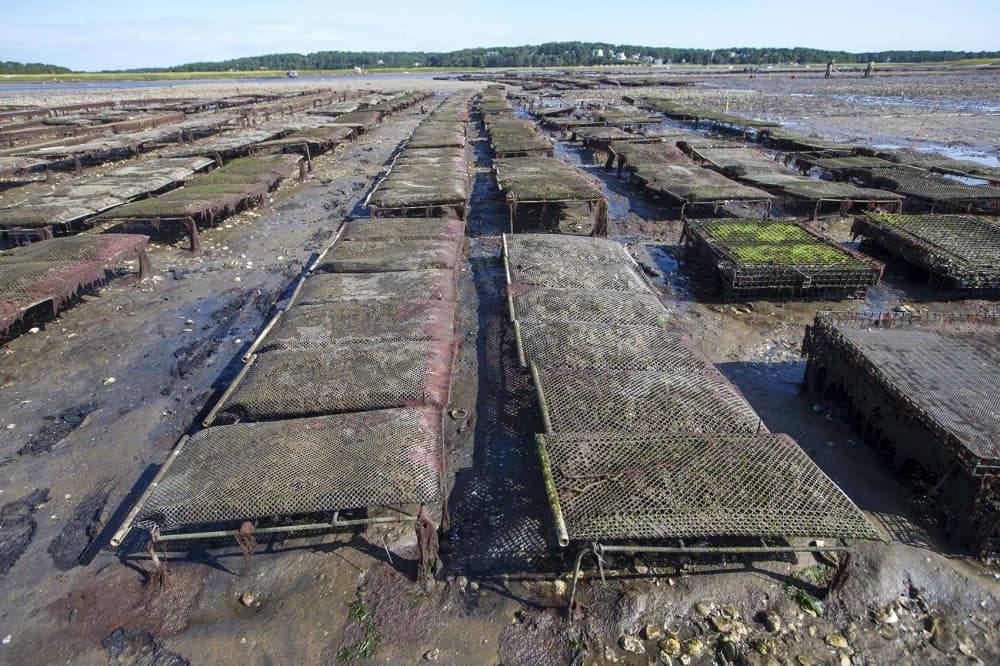
Vibrio illness continues to be both a statewide and national concern. Agencies including the Centers for Disease Control and Prevention encourage consumers who get ill after eating raw oysters to submit stool samples so reports of Vp infection can lead to investigations into accurate sources.
As it relates to climate change, research from the Northeast Center for Vibrio Disease and Ecology at the University of New Hampshire predicts the likelihood of warmer waters with changing chemistries leading to more bacteria-tainted oysters.
Like a lot of people in Wellfleet, second-generation oyster farmer Jake Puffer isn't 100 percent sure about what’s driven the rise of Vibrio in Massachusetts, but there’s no doubt he’s concerned about the harbor's health. That’s why he took part in Wellfleet’s Working Group on Climate Change.
“It's hard to think about the challenges that we might face in the future,” he says, standing ankle deep in his and his dad’s Wellfleet Oyster & Clam Company’s farming grant on Mayo Beach. “We're so susceptible to a global system. I mean the ocean, and the problems in the ocean could be our problems.”
Puffer thinks Wellfleet's banding together to prepare for climate change, as well as the town’s approach to Vibrio management, are success stories.
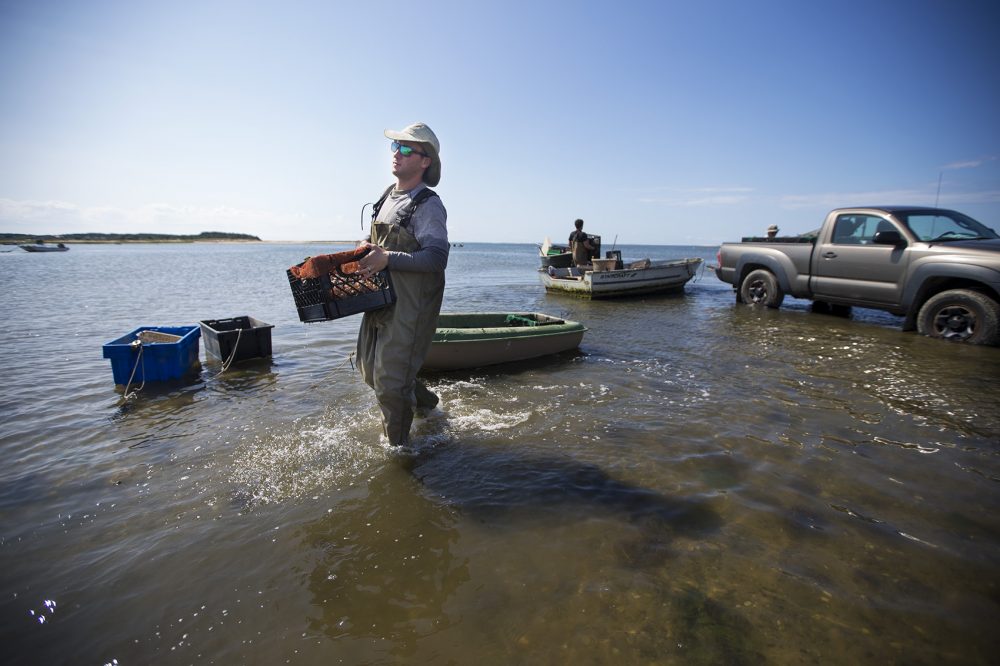
Race Against The Clock
But there have been more Vp outbreaks, even after the state’s plan.
In 2015, infections tied to Duxbury and Martha's Vineyard oysters resulted in a 14-day shellfishing closure. The state's response included tightening the initial exposure-to-ice time window for market-bound oysters from two hours to one hour in places including Duxbury. That rule now goes into effect each July 1.
You see it in action as activity erupts after the clock starts ticking on Ben Lloyd’s floating aquaculture operation in Duxbury Bay. Men wield big plastic shovels to move heaps of ice from one huge plastic vat into another. Bags of fresh oysters are buried in layers.
The race against the clock -- whether to ice or re-submerge exposed product — is par for the course these days for Lloyd. He also owns Pangea Shellfish in Boston, a wholesale company that also complies with state Vibrio control rules along his delivery routes and warehouse.
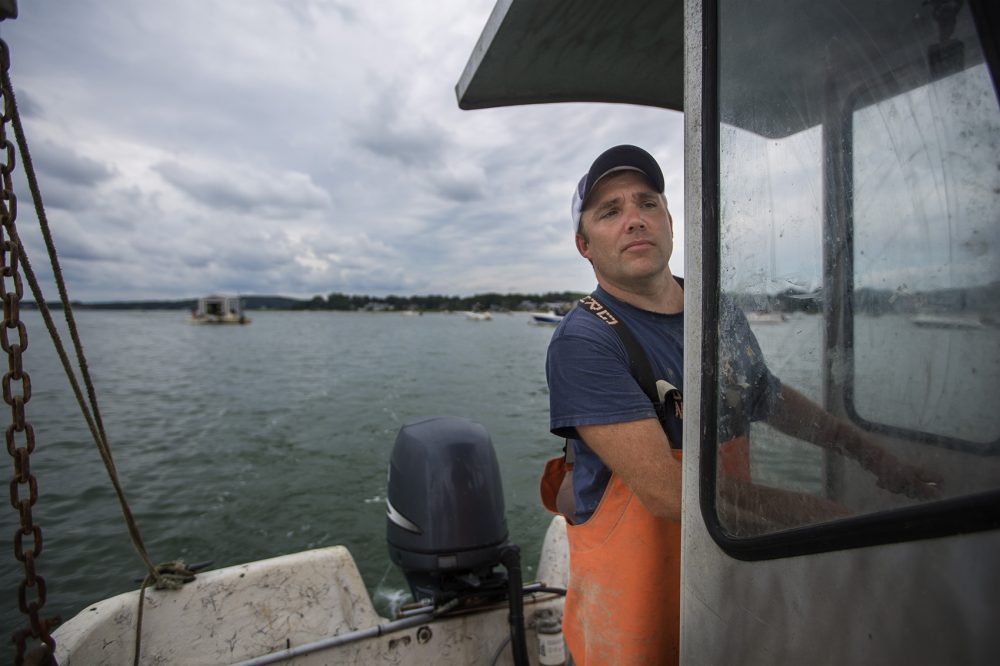
The 2015 outbreak caused a lot of finger-pointing at different players along the oyster supply chain, Lloyd remembers.
As for concerns about climate change and his industry? “We don't know what's coming down the pike," he says. "I mean, there could be oyster diseases that don't affect humans but kill oysters."
This fisherman is not alone with that worry. Or worries that different Vibrio strains will evolve or become problematic.
Lloyd’s oyster community is thinking hard about climate change's many potential impacts on the industry.
There's increasing ocean acidification's effect on healthy shell growth, and nitrogen runoff from rain into waterways and oyster habitats. And shellfishing in Wellfleet was shut down just last week because of heavy rainfall.
More photos from Duxbury:
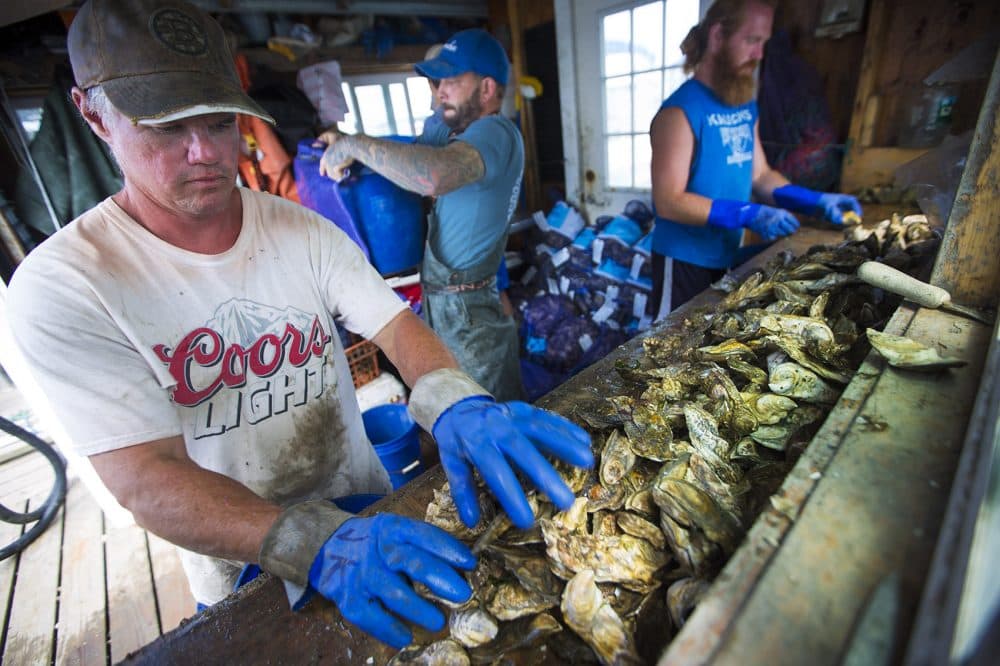
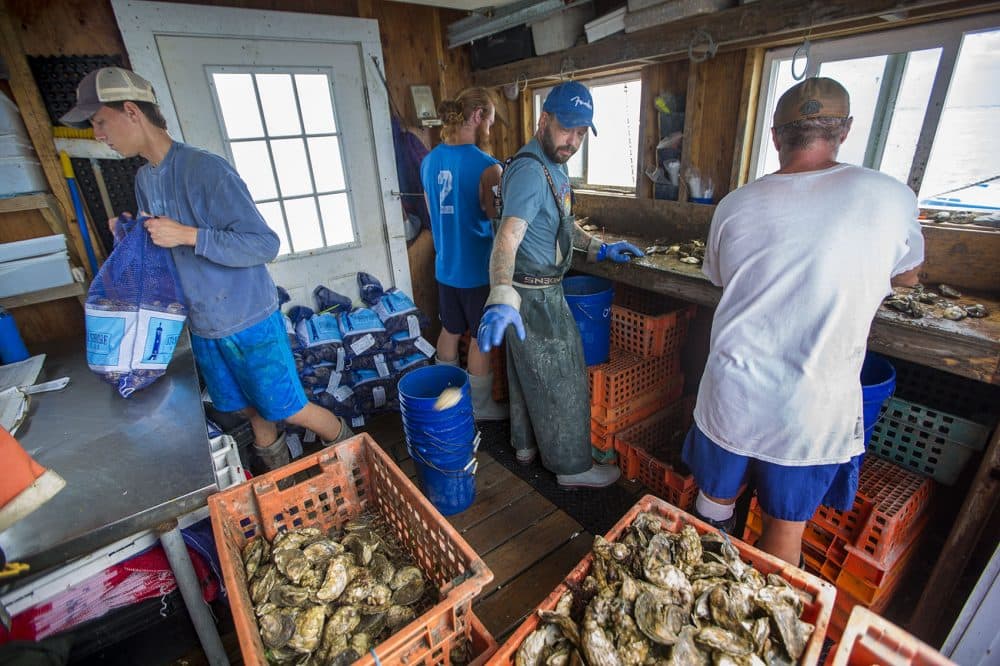
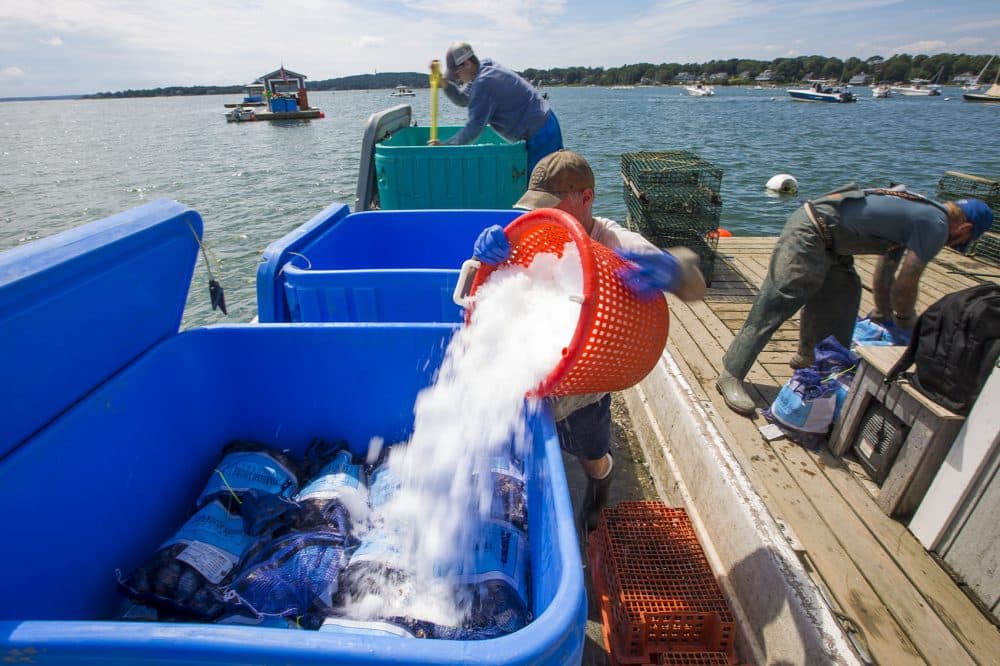
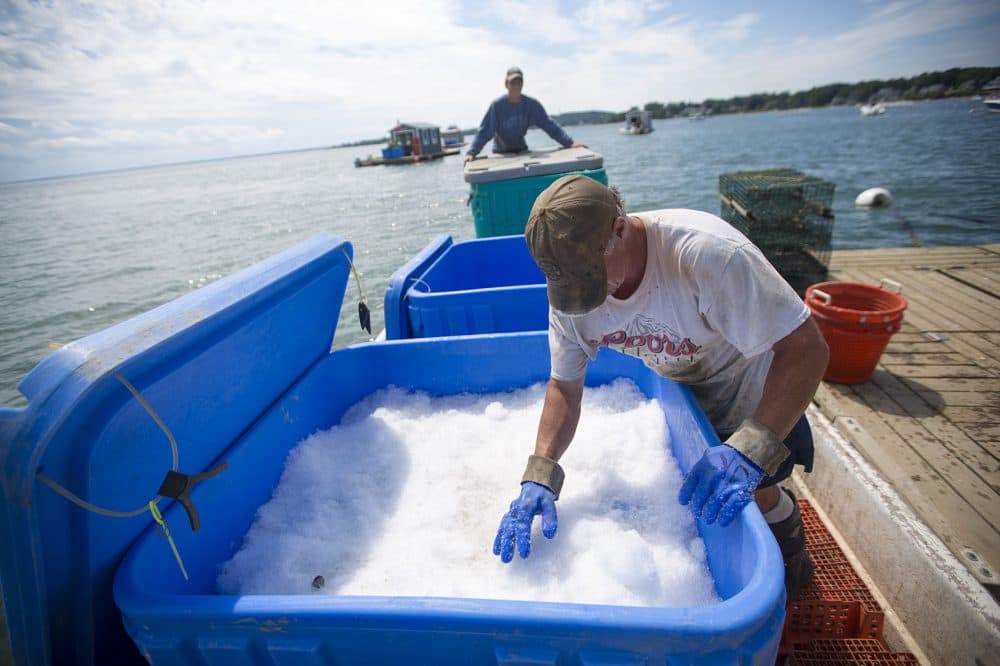
This segment aired on August 30, 2017.
